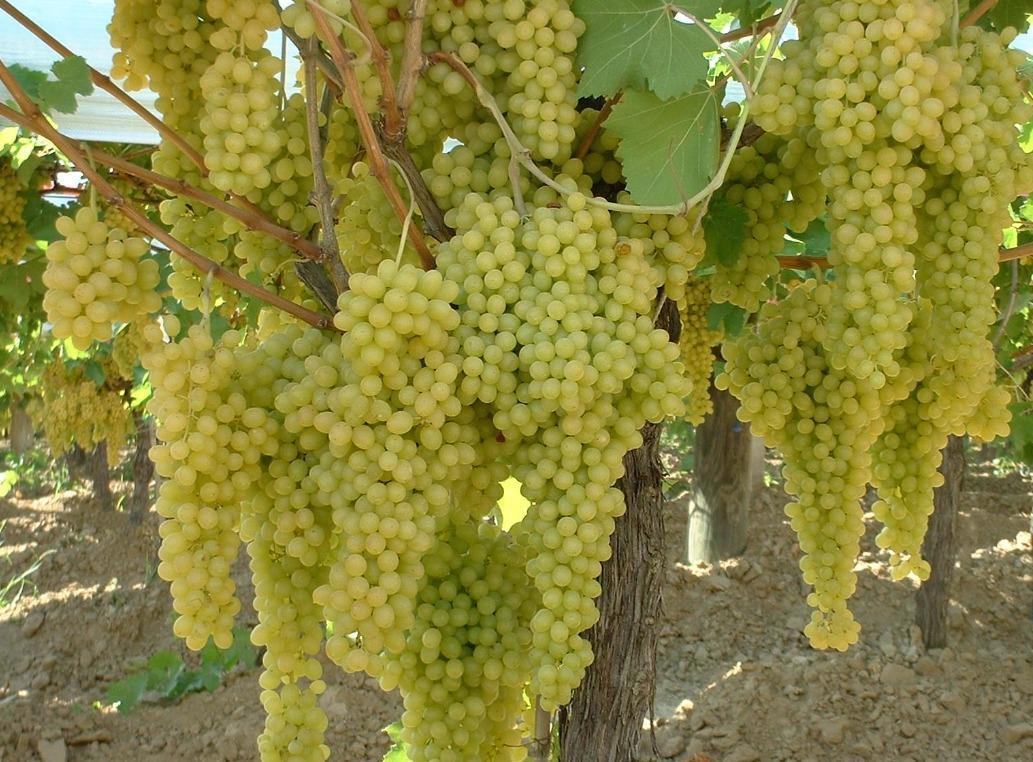Grape fit for a sultan

When we talk about the Aegean region in Türkiye, what first comes to mind is the spectacular seacoast, a terrain covered with endless olive groves in the north, and towards south, pine forests diving directly to the sea at about the vicinities of Marmaris and beyond. The region has a picturesque image with its idyllic lifestyle, laidback and tranquil, a bit hype in touristy places like Bodrum. Aegean region is the ultimate summer destination for many people in Türkiye, where many people prefer for its natural beauty and serene atmosphere. However, the Aegean region is much more, being one of the foremost agricultural regions in the country. While urbanites cool down on beaches, inland it is all toil and sweat where the countryfolk work in fields. The inland Aegean region is a major producer of olives, figs and grapes, not only for Türkiye, but for the whole world. Smyrna figs always had a worldwide recognition, so called as it was shipped from the port of Smyrna, today’s İzmir. Grapes of various kinds are the main source of income around İzmir, mostly to be consumed as fresh fruit, or dried both for local consumption and export. There are also several vineyards for winemaking, big and small scale, and a good bulk of grapes are destined to be distilled to make the Turkish national spirit rakı. But when we talk about grapes in the Aegean, one particular indigenous grape stands out: the Sultana grape.
Sultaniye grape is so named as it was considered worthy of Sultans. The province of Manisa is the epicenter of Sultaniye variety of grapes. Manisa is known as the city where Sultan’s sons, the so-called Ottoman crown princes were raised. Rumor has it that this precious grape of Manisa was deemed worthy of Sultans with its light green to pale yellow-gold amber color and its honey-like taste, and thus it got its name. The grape was delightful when fresh, with its juicy sweetness encased in a delicate thin skin, and of course being seedless it was just fit for a Sultan. In foreign languages the name was readily adapted to its dried form, in English, it was called "Sultana grape" and in German, it is known as “Sultaninen” and these became the commercial export names, a favorite of Christmas cakes and other sweet delights. In the course of time, seedlings were transported to America by the migrants especially around the 1870s, and after some grafting in the U.S., it was named “Thompson Seedless,” the new name deriving from the first person to grow this grape in California. Today the Sultaniye grape has Geographical Indication to two provinces in Türkiye, İzmir and Manisa. In Manisa, the districts of Alaşehir, Salihli and Sarıgöl present a landscape that you may liken to a sea of Sultaniye vineyards. Sultaniye is the main income for people here, and they are not only for tables to be savored as fresh fruit or in dried form, but for the bottles. A good portion of grapes end in bottles, either in wine form or now, in the recent years, with the leading rakı company in the country moving its production to Alaşehir, bunches are destined to the leading grape-distilled spirit of the country.
So where is this beautiful grape worthy of sultans originally from? I was curious as ever, and consulted Dr. Pınar Nacak, deputy secretary general of İzmir Commodity Exchange and one of the founders of YÜciTA, Local Products and Geographical Indications Research Network, the non-profit civil organization for the protection of regional produce. According to their research, it has been determined that its real origin is Karaburun, İzmir, just west of İzmir. She says that formerly Greece wanted to register the grape with loose proof of its origin, but they objected and carried out a detailed survey in search for the real origin of the world-famed grape. Apparently, the original variety has a more oblong shape, quite firm in texture and needless to say, delightful to eat as fresh grape. Unfortunately, this very original variety is almost extinct, only grown for local or own consumption by the locals. That is also how I learned about an incredibly exciting project to save the very origins of the grape: “Karaburun Revitalization of Sultaniye Grape Production Project.” The project is aimed to establish a model vineyard facility to produce grapes organically and to create market opportunities for the indigenous grapes, in addition, with this sample vineyard facility, it is aimed to set an example for Eğlenhoca village and other villages of Karaburun, to encourage viticulture in the region, to revitalize the agricultural potential of the region, and to contribute to the economic and social development of the local people. They also did oral history interviews inquiring about its history from the old locals, and one elderly man of around 90-100 years of age, told them that it was brought from the vineyards to the port by donkeys and transported to İzmir by boats, and he couldn't stop talking about the deliciousness of the grape, its flavor, its yellow color, and especially its sweetness.
In Türkiye, we have a habit of taking our assets for granted. Despite the GI appellation, you see that the famed Sultaniye grape is sold simply tagged as “çekirdeksiz üzüm” that is “seedless grape.” That is an overly humble way of presenting a grape that once got its name from Sultans, we surely need to be more aware of our agricultural values, and take care to bring to light such gems, like the original Karaburun Sultaniye grape in marketplaces.












